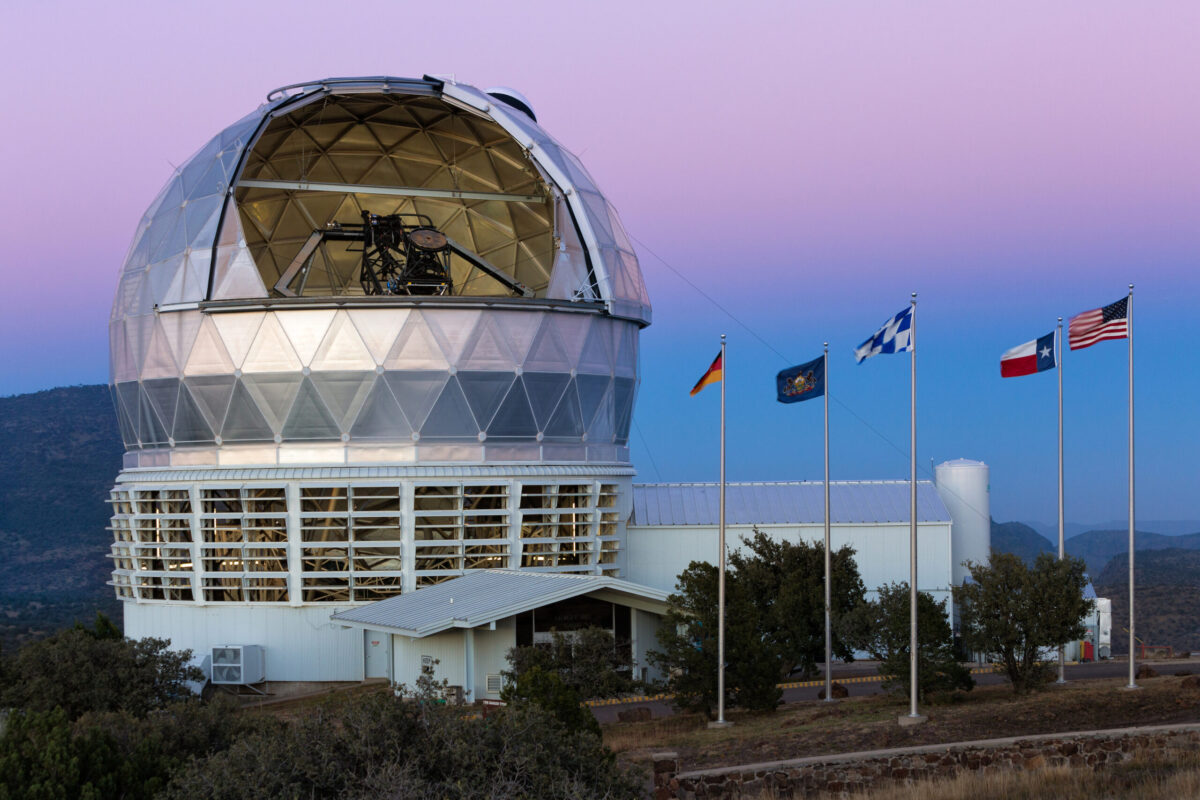By Joseph Chapman
Youngstown State University professor of physics and astronomy John Feldmeier is the chief imaging scientist for the Hobby-Eberly Telescope Dark Energy Experiment, or HETDEX. It is the first major experiment in the search for dark energy.
“This is the most important plot in astronomy, which is: ‘What is the universe made up of?’ So, you and I are made up of stuff, atoms, and of course, most of it is heavy elements,” Feldmeier said. “And all this stuff we see with our eyes, normal matter is this stuff. And you can see, that’s exactly 5% of the universe. Most of the universe is made up of stuff that we do not understand.”
According to Feldmeier, dark energy is responsible for the universe’s expansion. He said he has been involved in the project for the last 10 years and although results may be coming slowly, this is the nature of this type of project. The blind imaging survey is officially one third completed.
“This kind of science research people are sometimes like, ‘How come you didn’t do it faster?’ And we’re like, ‘It’s hard’… So, a lot of these projects, they take time to build up. But once they build up, it’s pretty amazing.”
Spectra — images taken of dispersed light from a source — are important to astronomers. Feldmeier’s job is to coordinate astronomers and download imaging data from various telescopes to match up the images with one another.
“The idea is that you match these two things against each other. So, this is like the peanut butter and this is like the chocolate. And when you put them together, you get a Reese’s Peanut Butter Cup,” he said.
Feldmeier explained how this project will use cosmic webs.
“Here’s a computer simulation of part of the universe. And each blue dot here is actually a galaxy. So, the Milky Way would be one of these dots. And so, as the universe has expanded with time, what happens is we wind up with this box on the right, where everything kind of looks like a spiderweb that is the galaxies clumped together,” he said. “But then there are these big empty spots where there aren’t that many galaxies. So, this cosmic web can tell us a lot about dark energy.”
He discussed how this large collaboration involved not only approximately 150 scientists working remotely from around the world, but YSU Penguins as well.
“The only way you can learn how to do science is to do some science. So, what we try to do is give each student, as part of their Capstone, a little piece of the project,” he said. “Eventually, they will be authors on the [academic] papers when we get to them about the imaging survey.”
Feldmeier also expressed excitement at the idea that HETDEX could lead to unrelated discoveries in astronomy.
“It’s like you’re digging for treasure. This is true of all astronomy surveys, you tend to find some cool stuff that you didn’t expect. But because HETDEX looks at the sky in a very different way, I think we’re going to find some very interesting things. I don’t know what those things are, but I’m very confident we’re going to find something really interesting that no one else has seen before.”
